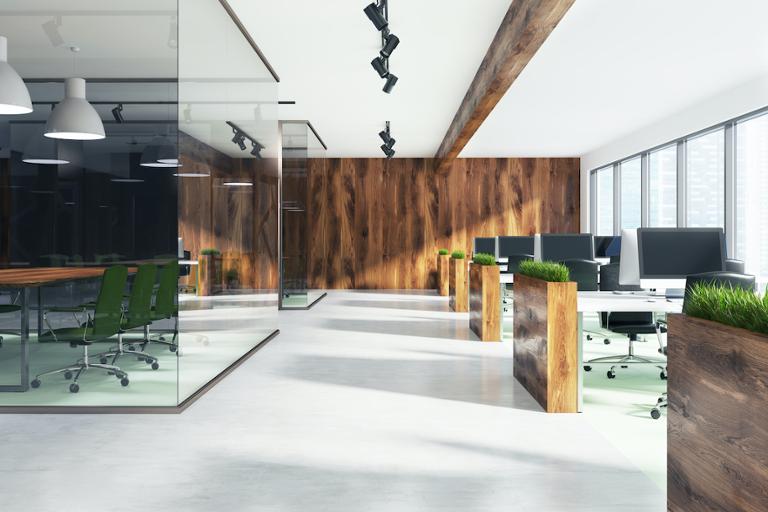Long before COVID-19 swept across the United States, technologists from all walks of life were expressing their displeasure with the open office. However, that fervent dislike didn’t stop companies from building out open spaces in which to corral employees. Will the pandemic change that?
In mid-2019, a study by Bospar and Propeller Insights found that 76 percent of workers disliked open offices; around 43 percent indicated that the lack of privacy was a big reason behind that distaste. At around the same time, a separate study by Royal Society Publishing found that face-to-face interactions among employees dipped 70 percent in open offices, while email use increased 56 percent—indicators that the open-office design wasn’t accomplishing its intended purpose of bringing workers closer together.
(Of course, things could always be worse. Once upon a time, Panasonic pumped out a concept device called the “Wear Space,” a wraparound panel that you strapped to your head to block your peripheral vision; when paired with noise-dampening headphones, this unusual headgear was supposed to give you additional privacy in a crowded, noisy open office. Thankfully, Wear Space hasn’t been mass-produced—yet.)
Before the pandemic, some companies were trying to find a happy medium between open offices and employees’ craving for even a scrap of privacy. That sparked the rise of the phone booth, the “huddle room,” and even the pod. “We have definitely seen a rise in requests for separate spaces for private rooms and phone booths,” Jonathan Wasserstrum, founder and CEO of SquareFoot, a commercial real-estate firm that recommends available office spaces based on clients’ customized criteria, told Dice last year. “If you have a robust inside sales team, you’ll rightfully expect them to be busy on phone calls at their rows of desks, which can produce significant noise within an office, and will also expectedly lead others, especially those working on deadline, to seek a quieter area for sitting.”
Now, COVID-19 might have changed the game for those advocates of office privacy and separation. While analysts seem reasonably certain that we’ll all return to a relatively normal life at some point, nobody has a definitive timetable for when that might happen. Meanwhile, the need to reactivate the economy means that businesses have already started exploring how to re-open their brick-and-mortar offices. While many technologists are perfectly happy working from home (provided they follow the best practices for remote work), many companies will likely want to consolidate many employees into a physical space again within the next several months.
So long as the virus remains a threat, though, that’s much easier said than done. An upcoming paper from the CDC shows how COVID-19 can move through an open office, as exemplified by its path through one South Korean call center; physical segregation of space (i.e., with doors and partitions) prevented one half of the floor from being infected to quite the same degree:

Fortunately, there are some relatively quick changes that management could make to office design that would potentially reduce infection. The World Economic Forum, for instance, recommends reducing the density of desks so that workers sit (or stand) at least six feet from one another. One-way corridors, physical walls and partitions, and automatic (i.e., touchless) doors and devices could all become the norm in some buildings.
Those changes, combined with a new emphasis on remote work, could radically alter the nature of the post-COVID office, at least in the short- to medium-term after the nationwide lockdowns end. The “open office” won’t wholly become a thing of the past, but a lot of the corporate momentum to embrace it might be checked. In addition, it will be interesting to see whether the huge tech companies that wholeheartedly embraced open office design for their marquee headquarters, including Facebook and Apple, will adjust their very expensive layouts as a result of all this.



